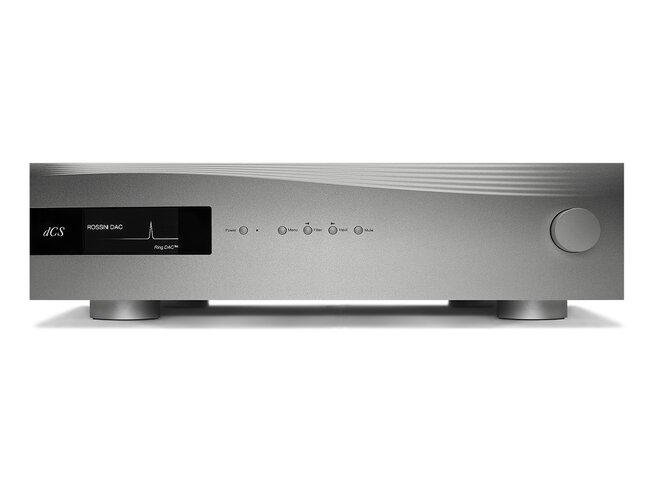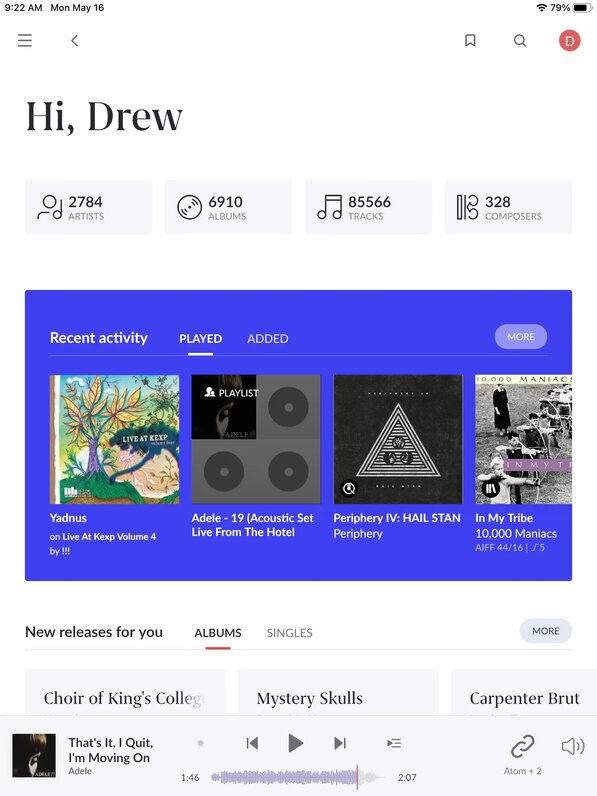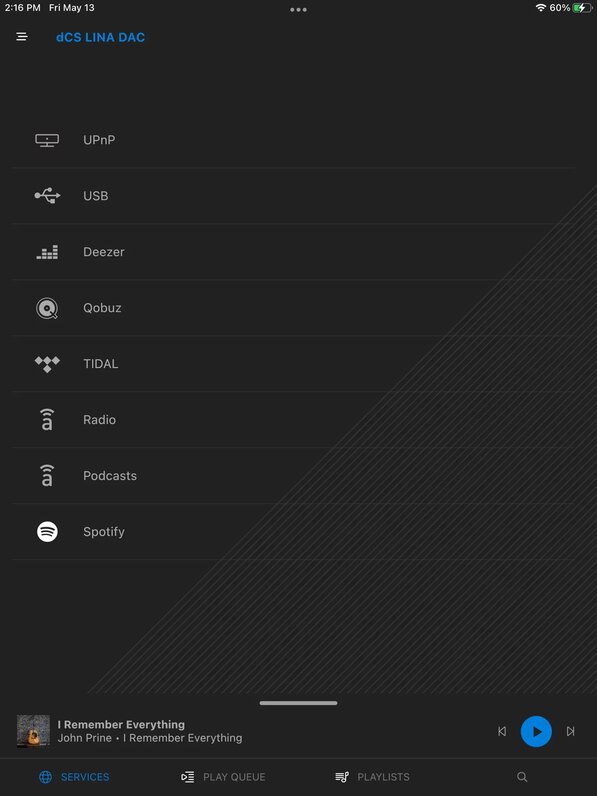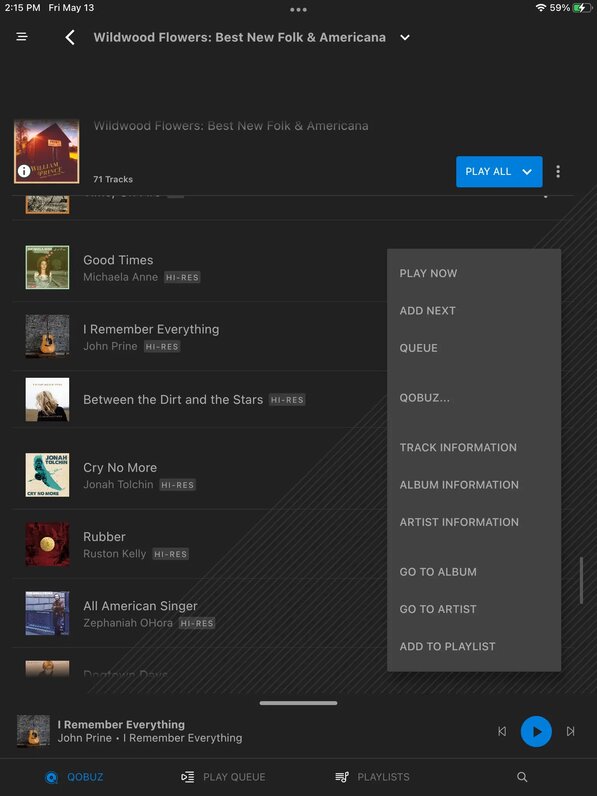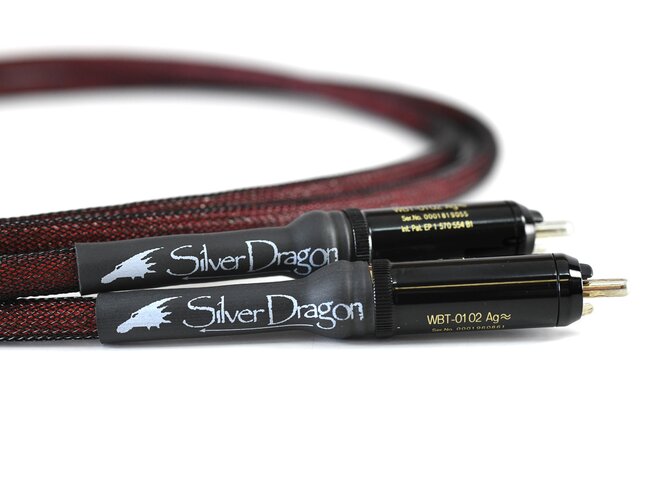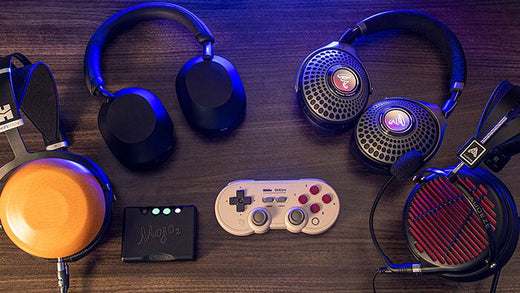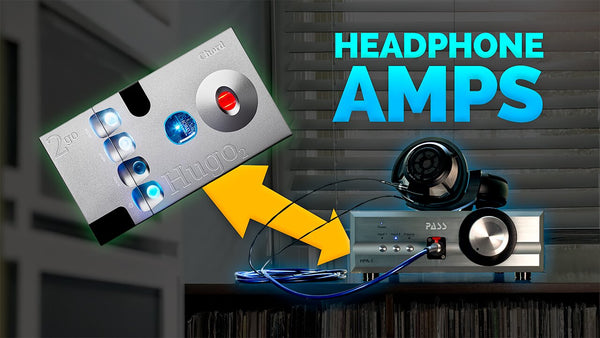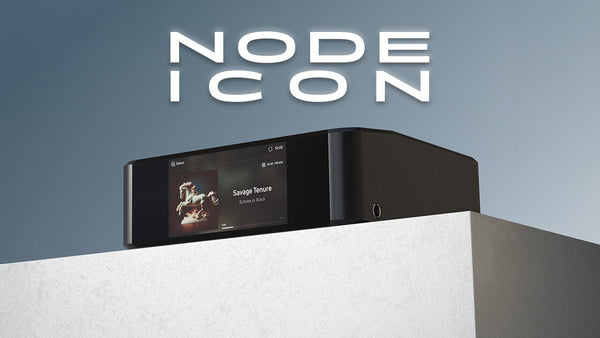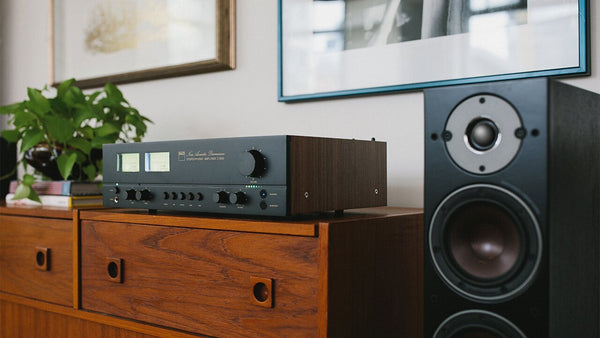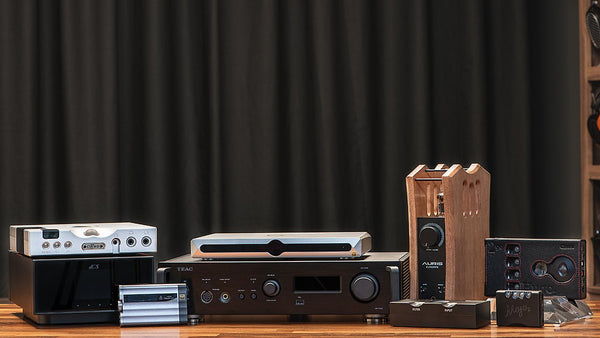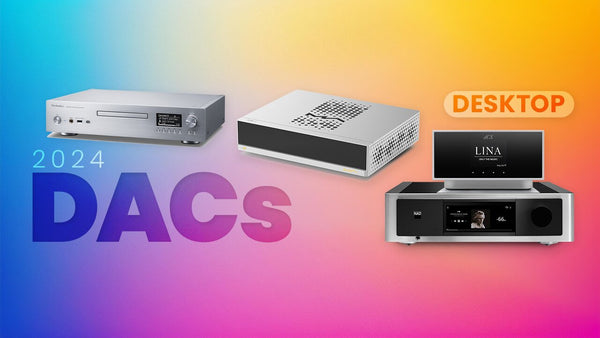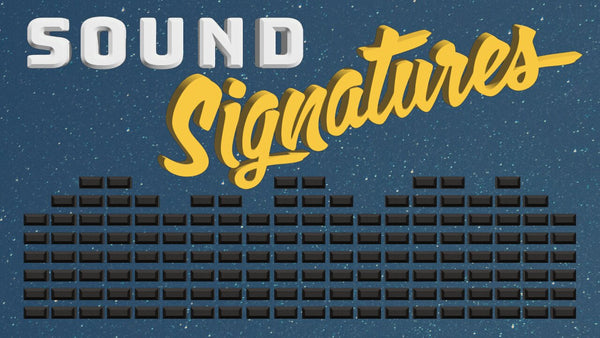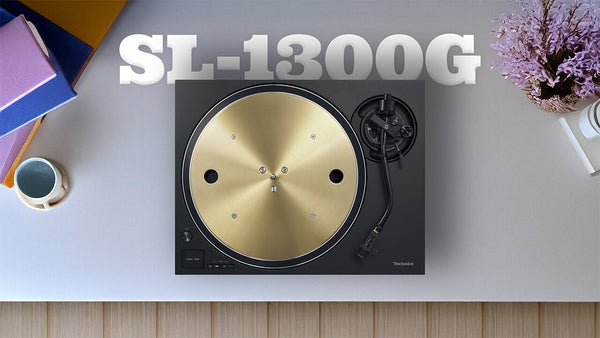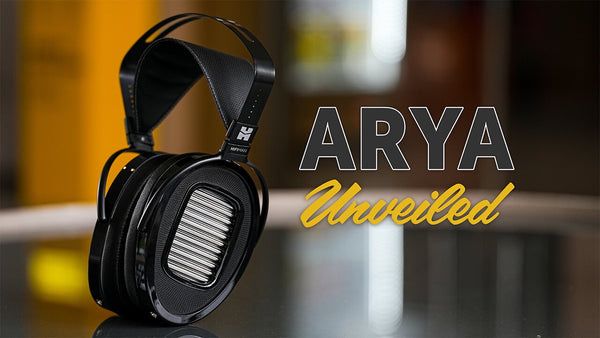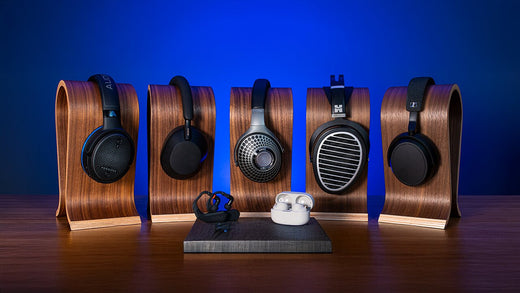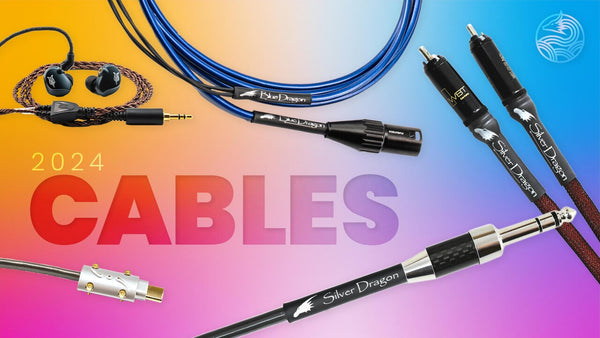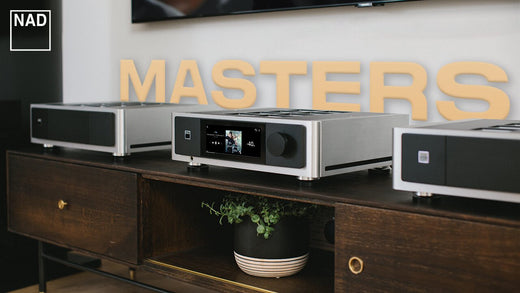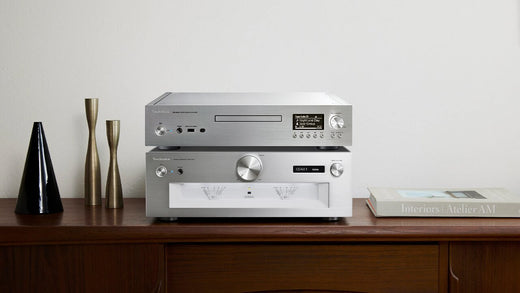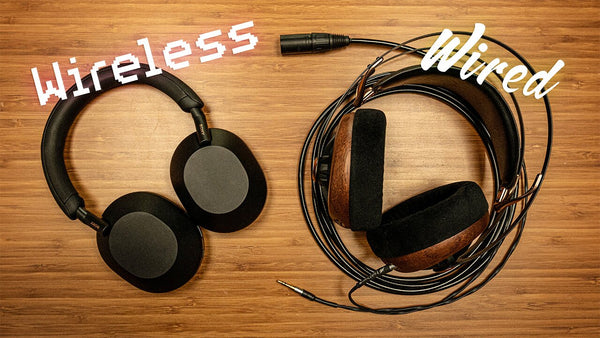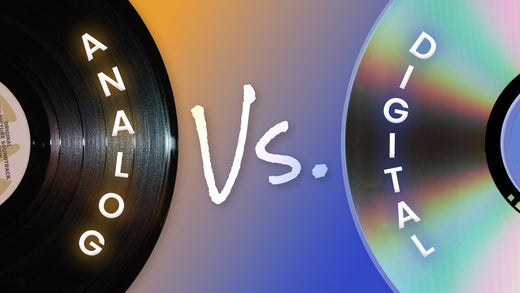Mastering Music: the dCS Rossini APEX DAC Network Streamer & Clock Review

Why the dCS Rossini APEX Is a Game Changer
In the ever-evolving world of high-end audio, few names command as much respect and admiration as dCS (Data Conversion Systems). With their Rossini APEX DAC/Network Streamer, dCS has once again redefined what's possible in digital audio playback, creating a component that stands head and shoulders above the competition. The Rossini APEX DAC/Network Streamer is part of a larger Rossini series consisting of a CD/SACD Transport, Music Player/Audio Player, and Master Clock. The Rossini isn't just another high-end streaming DAC; it's a statement piece that embodies decades of digital audio expertise. From its impeccable build quality to its cutting-edge technology, every aspect of the Rossini has been meticulously crafted to deliver an unparalleled listening experience. This isn't merely an incremental improvement over other top-tier DACs or music servers - it's a quantum leap that pushes the boundaries of what's achievable in home audio. What sets the Rossini apart is not just its exceptional DAC capabilities, but its seamless integration of network streaming functionality. This fusion of technologies results in a device that's not only extraordinarily capable but also incredibly versatile, adapting effortlessly to the modern audiophile's diverse needs.
But the story doesn't end there. In this review, we'll also be exploring the Rossini Master Clock - an optional companion that elevates the Rossini's performance to even greater heights. When paired with the Master Clock, the Rossini transcends its already lofty status, presenting listeners with a level of sound quality that can only be described as truly end-game. The synergy between these two components results in a presentation so pure, so detailed, and so emotionally engaging that it challenges the very limits of digital audio reproduction.
As we delve deeper into the capabilities of the dCS Rossini DAC/Network Streamer and its Master Clock companion, prepare to recalibrate your expectations of what's possible in home audio. This isn't just another piece of high-end equipment - it's a portal to a new dimension of musical enjoyment, where the barriers between the recording and the listener seem to melt away, leaving only the pure essence of the music itself. Join us as we explore how dCS has once again raised the bar, creating a digital audio solution that doesn't just compete with the best - it defines a new category of excellence all on its own, surpassing even renowned network players from brands like Naim and Bluesound.

PROS
- Clarity and Detail abound, Musicality Throughout
- High-end components, Ring DAC Tech
CONS
- End-Game Price
- No Bluetooth, Wi-Fi, HDMI Ports
- No Integrated Amplifier (unlike some streaming amplifiers)
dCS Rossini APEX DAC/Network Streamer Key Features
- The latest generation dCS Digital Processing Platform brings state-of-the-art signal processing and flexibility
- dCS Ring DAC APEX delivers enhanced sonic and technical performance
- High-quality streaming from TIDAL, Qobuz, Deezer, and internet radio via the dCS Mosaic Control app
- Roon Ready, AirPlay, Spotify Connect and UPnP compatible
- USB, AES, Dual AES, and S/PDIF digital audio inputs.
- Accepts encrypted SACD data from dCS Transport via Dual AES inputs
- Multi-stage DXD oversampling design with optional DSD upsampling; user-selectable DSP and DSD filters.
- Auto clocking system improves ease of use and minimizes jitter.
- Multi-stage power regulation and twin mains transformers isolate analog, digital, and clock circuitry.
- Firmware upgradeable for future functionality and performance upgrades.
- Features a full MQA™ decoder. This MQA™ implementation is unique, as it is the first opportunity to enable a DAC that, by providing exact rendering beyond 16x (768 kHz), matches the desired temporal response with very low modulation noise.
- Network audio capabilities rivaling dedicated music servers and network players
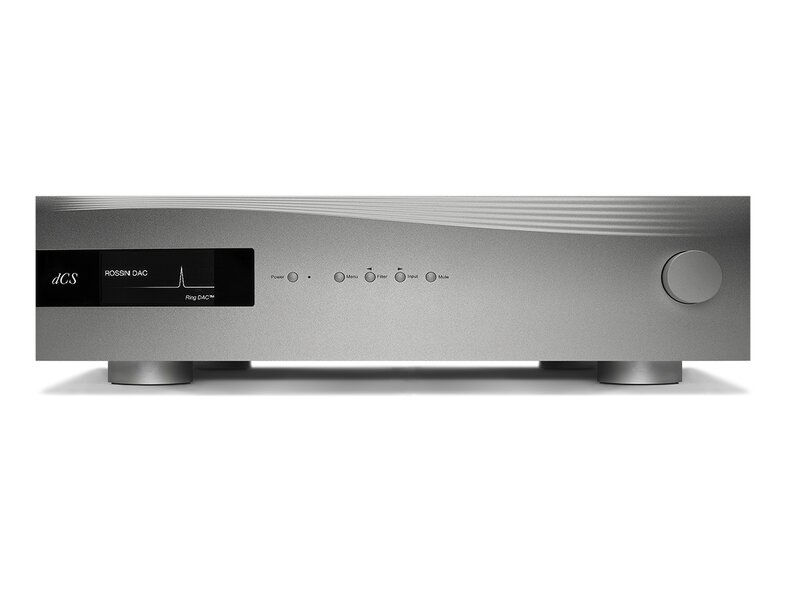
dCS Master Clock Key Features
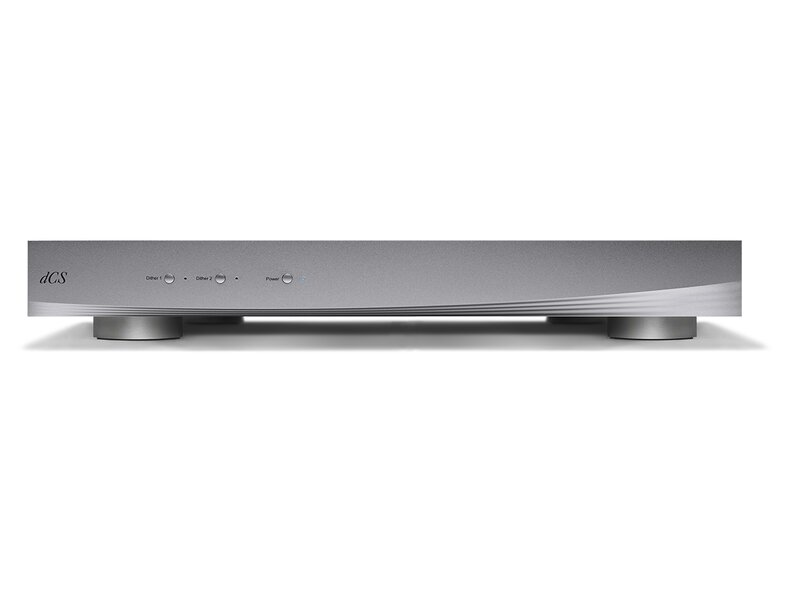
- Designed for maximum flexibility as output configuration can be optimized in systems with a wide variety of digital audio sources
- Dual crystal oscillators with microcontroller-enhanced temperature correction
- New dual frequency output and auto-clocking mode used in the Vivaldi and Rossini range improve ease of use and minimize jitter, particularly with computer audio sources
- Multi-stage regulation ensures sensitive clock and PLL circuitry is unaffected by digital interference
- Aerospace-grade machined aluminum chassis fitted with tuned acoustic damping panels reduces magnetic effects and vibration
The UK-based dCS has pioneered many state-of-the-art digital audio technologies during its more than 35-year history. Upsampling, oversampling, clocking, and PCM-to-DSD conversion are all areas in which the company has taken a revolutionary path, with several digital audio world firsts along the way. dCS never stops measuring, refining, and improving. Recognizing that technology is constantly changing, dCS has developed a flexible and modular product architecture that allows the company to continually invent new features and develop new capabilities.
From the digital processing platform and Ring DAC™ circuits at the heart of dCS technology to the control and user interface systems, dCS products can be easily reprogrammed. This serves as "future-proofing," allowing owners to continue improving the performance of their system throughout the life of the product. dCS' philosophy is to create products that are unrivaled in sonic and technical performance – products that deliver consistency, reliability, and performance like no other. It starts with all hardware and software being crafted in-house. Every component is carefully chosen from the best suppliers, most of them within Britain. dCS follows a manufacturing and testing process that exceeds even the most demanding industry standards. The company uses an automated testing system that was originally designed to meet exacting military standards.
Each dCS system is:
Designed and hand-assembled in the UK by dCS' expert technicians and engineers
Fitted with flexible, FPGA-based firmware for a long product lifespan
Manufactured using the finest materials
Rigorously tested using state-of-the-art equipment
Created using proprietary hardware and software developed by dCS
Design
The thing about design in the audiophile world is that it becomes fairly easy to tell if something is high-end. The high-end design does not just mean a high price tag, but rather that it’s made with premium components, quality materials, and a keen understanding of how these things go together in a package that looks worthy of what you pay for it. DCS is synonymous with elegance and modernity. They’re not gaudy or industrial-looking like some audiophile equipment can be, but rather it’s an understated external chassis design that has just a brush of suave - enough to show off the fact that it takes a lot of planning and precision engineering to make a chassis this smooth and sleek. I’m a big fan of the Rossini design. Sure from afar you can mistake it for just another CNC aluminum-milled box, but it’s not until you get right up to it that you see the elegance that only dCS can accomplish. The wave pattern on the top of the front face sets it apart from the lower-tiered Bartok series.
On the front of the Rossini DAC, you'll find a display screen to the left on the faceplate, followed by the power button, the Menu button, Filter, Input, and Mute buttons. On the right side of the front face is the navigation and volume wheel, allowing you to make your selections in the menu and adjust the volume output as needed.
The back of the DAC is where the real fun is, however, providing the user with a multitude of inputs and outputs. On the left side, you'll see balanced (XLR) and single-ended (RCA) stereo analog outs, followed by 2 AES/EBU inputs, 3 SPDIF jacks (RCA, BNC, and Toslink), 2 wordclock inputs, 1 wordclock output, USB Type A, USB Type B, 2x Network/Ethernet ports (Main and Loop), RS-232 Connection (Crestron, AMX RTi, URC, Control4), and the power switch. The Rossini provides an outstanding I/O suite for any hi-fi system out there, allowing you to integrate this world-class DAC for top-of-the-line conversion.
Available in silver or black finishes, the Rossini Apex is designed to complement any high-end audio setup while making a statement of its own. But the Rossini's beauty isn't just skin deep. Every aspect of its design serves a purpose, from the carefully chosen materials to the precise placement of each component. This marriage of form and function is a hallmark of dCS's design philosophy, where nothing is superfluous and everything contributes to the ultimate goal: unparalleled audio reproduction. The Rossini's chassis is a testament to dCS's commitment to excellence. Constructed from aerospace-grade aluminum, it's not just about looks – this robust enclosure serves a critical function in isolating sensitive internal components from external vibrations and electromagnetic interference. The chassis is precision-milled to incredibly tight tolerances, ensuring perfect fit and finish. This level of precision serves multiple purposes. First, it creates a visually stunning product that exudes quality. Second, and more importantly, it provides a stable and inert platform for the delicate electronics within. By minimizing external influences, the Rossini ensures that the only thing you hear is the music, reproduced with utmost fidelity.
Peek inside the Rossini, and you'll find a layout that's as much a work of art as the exterior. The internal architecture is a study of optimal signal path design and component isolation. Critical analog and digital sections are physically separated to minimize interference, with careful attention paid to power supply routing and grounding schemes. This meticulous internal design is crucial to the Rossini's performance. By keeping sensitive signal paths as short as possible and isolating potential sources of noise, dCS engineers have created an environment where each component can perform at its absolute best. The result is a vanishingly low noise floor and exceptional clarity across the entire frequency spectrum.
Heat is the enemy of precision electronics, and dCS has addressed this with an innovative passive cooling system. Carefully designed heatsinks and ventilation pathways ensure optimal operating temperatures without the need for noisy fans, preserving the Rossini's silent operation. This approach to thermal management is a perfect example of dCS's holistic design philosophy. By eliminating fans, they've not only reduced potential sources of noise but also removed moving parts that could potentially fail over time. The result is a product that runs cool and quiet, ensuring consistent performance for years to come. It's the small details that elevate the Rossini from excellent to extraordinary. The precision-damped feet minimize vibration transfer, the carefully chosen and positioned screws ensure rigid construction without introducing resonances, and even the silk-screened labels are designed for clarity and longevity. These seemingly minor elements add up to create a product that feels as good as it sounds. From the satisfying weight of the unit to the smooth action of its controls, every interaction with the Rossini reinforces its quality and craftsmanship.
Creating each Rossini is a painstaking process that combines high-tech manufacturing with artisanal craftsmanship. From the initial CNC machining of the chassis to the final assembly and testing, each unit undergoes rigorous quality control checks. dCS employs skilled technicians who hand-assemble critical components, ensuring that every Rossini meets the company's exacting standards. This blend of cutting-edge technology and human expertise is what sets dCS apart. While machines ensure precision and consistency, it's the trained ear and experienced hand of a skilled technician that provides the final stamp of approval. Each Rossini is not just assembled; it's crafted with care and attention to detail that borders on obsession.
The Difference of the APEX Upgrade
What is the APEX upgrade? The APEX upgrade is a hardware and software update that dCS introduced in 2022. It involves replacing certain critical components in the analog output stage and updating the device's firmware. This upgrade can be applied to existing dCS products, allowing owners to enhance their systems without needing to replace the entire unit.
- Hardware changes: The APEX upgrade replaces key components in the analog output stage with newer, higher-performance parts. This includes changes to the ring DAC (Digital-to-Analog Converter) circuitry, which is at the heart of dCS's digital audio processing.
- Firmware update: Along with the hardware changes, the APEX upgrade includes updated firmware that optimizes the performance of the new components and further refines the digital signal processing.
- Improved power supply: The upgrade also involves enhancements to the power supply circuitry, which can lead to better overall performance.
How does it affect performance and sound?
- Lower noise floor: The upgraded components and circuitry result in a significantly lower noise floor, which can lead to improved detail retrieval and a blacker background for the music.
- Improved dynamics: Enhanced dynamic range, with both micro and macro dynamics benefiting from the upgrade.
- Better tonal balance: The APEX upgrade provides a more natural and accurate tonal balance across the frequency spectrum.
- Increased resolution: The lower noise floor and improved circuitry allow for finer resolution of musical details and spatial cues.
- Wider soundstage: Listeners report an expanded and more precisely defined soundstage after the APEX upgrade.
- Smoother high frequencies: The upgrade results in smoother, more natural-sounding high frequencies without any loss of detail.
- Improved timing and rhythm: Enhances the sense of musical timing and rhythm, making performances feel more cohesive and engaging.
It's important to note that while these improvements are widely reported, the specific impact can vary depending on the rest of the audio system and individual listening preferences. Additionally, as with all high-end audio upgrades, the differences may be subtle to some listeners and more pronounced to others. The APEX upgrade represents dCS's commitment to continual improvement and its desire to offer cutting-edge performance to existing customers. It allows owners of compatible dCS products to bring their systems up to the latest standards without needing to replace their entire units.
Sound
-dCS
The heart of the dCS Rossini is its proprietary Ring DAC, a testament to dCS's commitment to audio excellence. Unlike many manufacturers who rely on off-the-shelf components, dCS builds its Ring DACs entirely in-house, allowing for unparalleled control over the digital-to-analog conversion process. To appreciate the significance of this approach, it's essential to understand the fundamentals of digital audio conversion. Sound in its natural form is analog - continuous waves of air pressure that our ears interpret as music or speech. To store and manipulate audio digitally, these analog waves must be converted into digital data through a process of sampling and quantization. The quality of digital audio is primarily determined by the sample rate (how often the analog signal is measured) and bit depth (how many binary digits are used to represent each sample).
When we play back digital audio, we need to reverse this process, converting the binary data back into an analog signal that can drive our speakers or headphones. This is where a Digital-to-Analog Converter (DAC) comes into play. A DAC's primary function is to translate binary numbers into corresponding analog voltages, using a series of current sources - electronic components that generate specific amounts of analog voltage based on the digital input. Traditional DAC architectures, such as ladder DACs, face several challenges including component tolerances, zero crossing point distortion, and linearity issues, which can result in various forms of distortion potentially compromising the purity of the audio signal.
The dCS Ring DAC takes a fundamentally different approach to digital-to-analog conversion. Instead of using a fixed ladder of current sources, it employs a large number of identical current sources arranged in a ring configuration. Rather than assigning each bit to a specific current source, the Ring DAC dynamically maps the digital signal across its array of current sources. This mapping changes constantly, following a complex algorithm. By spreading the conversion across multiple current sources, the Ring DAC effectively averages out small errors in individual components. The dynamic nature of the conversion process helps to minimize issues like zero crossing distortion and improves overall linearity. Before the actual D/A conversion, the Ring DAC employs sophisticated digital signal processing to upsample the audio and shape the noise spectrum, pushing quantization errors out of the audible range.
This unique architecture offers several advantages. By averaging across multiple current sources, the Ring DAC achieves a level of precision that's difficult to match with traditional architectures. The dynamic mapping and advanced signal processing help to minimize various forms of distortion, resulting in a purer audio signal. The Ring DAC maintains its accuracy even at very low signal levels, crucial for preserving the subtle details and ambiance in music. As a proprietary design, dCS can continually refine and improve the Ring DAC through both hardware and firmware updates, allowing existing products to benefit from ongoing research and development. In essence, the dCS Ring DAC represents a groundbreaking approach to digital-to-analog conversion, addressing many of the challenges inherent in traditional designs and aiming to deliver the utmost fidelity to the original audio signal, allowing listeners to experience their music with unprecedented clarity and realism.
dCS' Ring DAC seeks to correct the issues that are inherent in ladder DACs. The Ring DAC uses a network of FPGAs (field programmable gate arrays) that run proprietary dCS software that performs digital-to-analog conversion and digital filtering. A couple of things to note about the Ring DAC that make it different from a ladder DAC. A key point here is that the ladder DAC removes the link between the original signal and the physical resistor value errors associated with specific sample values.
- The Ring DAC uses current sources of equal value
- The Ring DAC does not use the same current source(s) for the same bit every time
One of the key advantages of the Ring DAC is its upgradeability via firmware updates. Featuring DXD upsampling as standard, the Ring DAC's multi-stage oversampling design offers optional DSD upsampling plus an extensive selection of DSP filters to suit individual tastes and music choices. You've got four filters with DSD content, plus six filters with PCM. I played around with PCM filtering and found the differences to be subtle, with Filter 4 offering a discernible lift in warmth and fullness to the sound.
If 1080p is the standard for high-definition video today, 4K is the premium version, 8K is still a ways off, then the Rossini APEX is easily the 16K of the future. We've talked about "realism" before here in reviews, but it's like you don't know how far something can go until you've heard the next best thing, right? That's the case with the Rossini. The Bartok and the Lina all sound end-game (as they should), but the Rossini is another game entirely. It's on another plane of existence in comparison. Details abound, and there's something about the "tone" of rings DACs that I really like the more I listen to them. It's hard to explain, but it's an extremely subtle element that makes the recordings feel a touch more organic. Perhaps it's the nature of dCS products in general, but there's a level of transparency and musicality that stands out.
I'll be honest - I'm obsessed with this setup (see the Dragon cable section for a full list). I used it in the Auris Audio Headonia Review, and I doubt I'll find a replacement for some time. Yeah, it's a pricey one, but the Rossini is at the top of the totem pole so it's hard not to go all out. Abbey Road is one of those albums that I know better than the back of my own hand. With every instrument entrance, harmonies, backing parts, flubs, and more, it's one of those handful of albums I use to instantly discern the sonic abilities of a piece of gear. On Here Comes the Sun, there's a gentle and sweet element of the acoustic guitar that usually gets lost in lesser systems once the rest of the band comes in after the intro. The Rossini helps sustain this tonality of the guitar throughout the rest of the arrangement, partly due to the excellent soundstage and imaging that it provides. There is a musicality to Paul's bass playing that comes to the forefront this time around. It equally drives the tune and there's a lot of dancing around notes that the Rossini is bringing out beautifully.
The Battle from Hans Zimmer's Gladiator score has been featured numerous times in my reviews in the past. It's an endurance and dynamics test that I like to put new gear through to assess overall performance. Soft lows to bellowing highs, sub bass that easily distorts the driver - it is not a test for the faint of heart and for systems not truly up to the task. It was no issue for this setup. The Rossini Apex, combined with the Master Clock, Headonia, and the Susvara Unveiled was simply the best I have ever heard this score sound. There are few moments in this hobby where you simply have to stop and admire what is coming into your ears. This was a top 5 experience for me, and the number one spot for The Battle. I've never heard it this encompassing, impactful, full of emotion and energy. I'm one of those people who get goosebumps when listening to music (apparently a rarity according to statistics), and my skin was crawling the entire 10-plus minutes from start to finish. The shine on the brass, the warmth of the French horns, and the thundering drums are something every audiophile should experience on this earth. The Rossini + clock combo is especially capable - delivering extremely fast and dynamically stable. The HiFiMan Susvara Unveiled is a superb headphone for this setup and sound, but I tried others including the Meze Audio Elite and the Dan Clark Audio E3 with equally exciting variations on a theme.
The sense of space and distance is something that stands out to me about the Rossini Apex. No matter the size of the ensemble, whether it be a small jazz trio, an eight-piece ska band, or a symphonic orchestra, the sound that comes from this set (the Rossini Apex and the Master Clock) is wonderfully dynamic according to the recording. The trio still fills up the room, but what helps fill in the space is provided by a sense of intimacy and proximity, being able to localize each performer and your proximity to them. Larger ensembles sound like so, but there is space provided for each performer, each section, with incredible third-dimensionality. I wish I could compare this to a non-Apex Rossini to see how much is improved with dynamics, tonal balance, soundstage, and resolution, but after listening to the Rossini Apex for the duration of this review, there's really no need. Once you hear something at this level of fidelity it's going to be hard to compare. The bar is set, and the Rossini Apex and Master Clock is the real end-game deal.
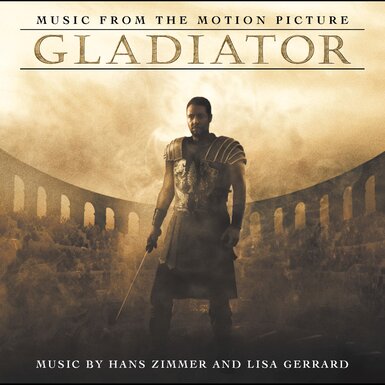
by Hans Zimmer

by The Beatles

by Ottorino Respighi

Clocking: A Closer Look
-dCS
dCS pioneered the use of external master clocks in the 1980s, and they've been perfecting their expertise since then. Now, you may wonder: "Why would I need an external clock? Doesn't the Rossini Apex DAC already have a clock?" It does. Every DAC contains a clock, but adding an external master clock to your system can result in significant sonic improvements. Subjective listening tests have shown improved imaging, resolution, dynamic expression, and localization, plus a greater sense of rhythmic movement and flow when you use a master clock. So while the Rossini Apex DAC delivers great performance, adding the Master Clock improves the sound quality when using the network or USB inputs. Does not having an external clock mean you can't enjoy your music? Of course not. But when you are trying to squeeze out every last drop of performance, adding one is the next upgrade.
Any digital component must have a clock to understand when it's time to do something with the audio samples it receives at its input. Clocking is like a "drill sergeant" that keeps digital files aligned along their time axis. This is not just limited to the DAC chip, if one is used, but also the other digital signal components that have to keep in line with the digital-to-analog process (digital power supplies, control chips, and other various pieces of the digital puzzle).
The timing of this process is crucial to ensuring the audio we hear provides an accurate representation. If audio samples aren't converted by the DAC at exactly the right moment, then we hear an artificially distorted version of the musical note. If the timing fluctuates during the digital-to-analog process, it is much more difficult to render an analog audio waveform that is identical to the original. This is even more critical with DSD audio signals over PCM, as they function at megahertz speeds in the time axis. Having as accurate a clock signal as possible is crucial for the re-creation of digital audio signals, particularly high-resolution files that use ultra-high sampling-rates, such as DSD at 22.5MHz or PCM at 768kHz.
The DAC must convert the signal at an exact moment in time along with its other partners in the signal path. Let's say we have a standalone CD transport and a standalone DAC. Each one of these devices has all sorts of components that need to line up with the data stream. Now, all off-the-shelf DAC chips have their own ability to do some clocking, and crystal clocks are implemented a lot of the time, but this only controls what is happening in that device. But when multiple devices are in the digital chain, you need more.
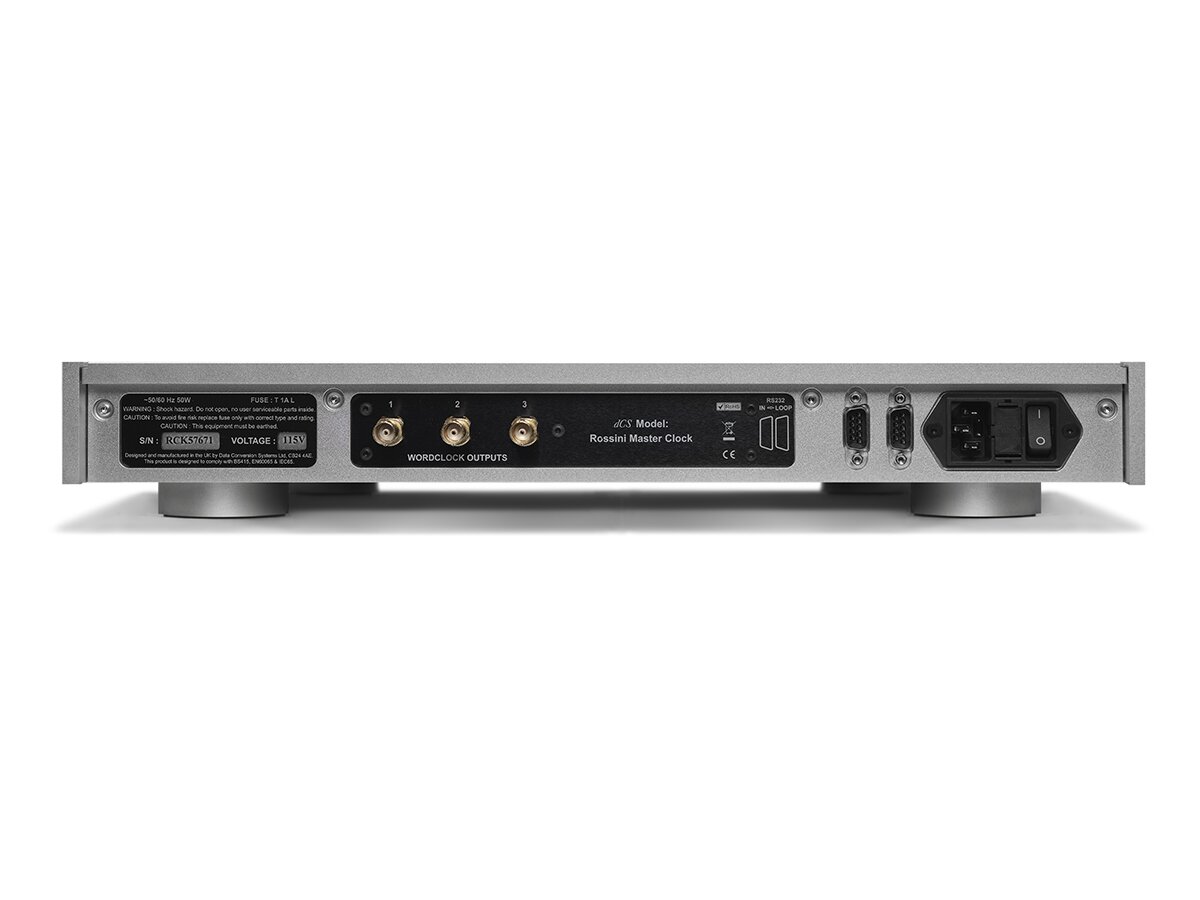
Think of jitter as digital noise. It doesn't sound as drastic as, say, pink or white noise in the background, but what it does is smear the tonality of the music ever so slightly. The result might be less resolution and clarity. It's like looking through dirty eyeglasses: You can still see, but not as clearly. Digital clocks have very sensitive circuitry. And like anything else in the audio equipment realm, if you isolate functions of the process into its own device, you can do a much better job of isolating that one function.
Here is an easier way to explain this in the analog domain. Let's say you have an audio receiver. At one time, the audio receiver did it all. It had a tuner for radio, a preamp for volume control and switching, a phono equalization circuit, and an amplifier for the speaker. If you isolate each one of these pieces into its own chassis with its own power supply and filtering and so on, each one of these pieces can do so much better on its own and sound better than if they are all combined in one circuit. Now that is not to say that you can’t build a good all-in-one, but it is more complicated. If we can separate out the clock and have it control each digital device's timing, the lenses in those eyeglasses become ultra-clear and sharp. A clock circuit is very sensitive to interference and especially temperature. Temperature in a multi-circuit device like a CD player is not easy to control; there are just too many circuits and processes going on.
The Rossini Clock introduces a dual frequency output and auto-clocking mode, technologies previously seen in dCS's flagship Vivaldi series. These features significantly improve ease of use while minimizing jitter, a critical factor in maintaining audio fidelity, especially when dealing with computer audio sources. Flexibility is a key attribute of the Rossini Master Clock. Its output configuration can be optimized to accommodate a wide variety of digital audio sources, making it a versatile addition to diverse high-end audio setups. The clock's multi-stage regulation system effectively isolates sensitive clock and PLL circuitry from digital interference, preserving the purity of the timing signals. Housed in an aerospace-grade machined aluminum chassis, the Rossini Master Clock isn't just about internal excellence. The exterior is fitted with tuned acoustic damping panels, which work to reduce magnetic effects and vibration, further enhancing the clock's performance and the overall audio experience. The dCS Rossini Master Clock goes to extreme lengths to guarantee stability and reliability whether you are doing internet streaming or pulling stored music from your network. If you want the best performance for your high-resolution audio on your Rossini music streamer, then the Master Clock is a necessity giving you complete control and ensuring absolutely no aliasing in your hi-fi setup.
Software - dCS Mosaic
Mosaic at a Glance
Mosaic is dCS' proprietary software that allows you to browse and play music from any device running iOS or Android. Mosaic consists of three elements:
dCS Mosaic is the name for the audio streaming and networked control functionality of dCS products.
dCS Mosaic Control is the name of the iOS and Android software application for music management and product control.
dCS Mosaic Processor is the physical hardware component and associated software that is installed in the dCS product to provide streaming functionality.
dCS Mosaic is a bespoke collection of hardware and software modules that allow you to access your digital music in various formats. When it comes to controlling your music library, a well-executed app can make the experience that much more seamless and pleasurable. The dCS Mosaic app for iOS and Android offers an intuitive way to browse and access music from multiple sources and audio libraries. Mosaic brings together audio from multiple sources into a single, unified interface, making multi-source playback simple. You can use the app to browse media from various streaming services and to manage settings and configuration options for your dCS products. Mosaic is compatible with:
- UPnP
- USB
- Internet Radio
- TIDAL, Qobuz, Deezer Hi-Res Music Streaming Services
- Spotify via the Spotify Connect app
- Podcasts via Airable
Since the Rossini Apex is Roon Ready, you have the option of using Roon as your media management platform. If you have a Roon account, install Roon Core on your NAS drive or on a networked computer. You can then use Roon remote to control playback on your Rossini Apex. Why might you opt to run Roon instead of Mosaic? It comes down to user experience – and your willingness to pay a monthly subscription fee.
Roon was created for the music streaming enthusiast who wants a highly curated experience. It's a virtual playground for music discovery, where you can spend as much time researching as you do listening. Now, Roon offers the basics like album info, artist info, and track info. But Roon takes it many steps further with things like extensive artist bios, artist suggestions, and lots of visual pizzazz. The home screen in Roon is a personalized experience with personal stats, recent activity, suggestions, playlists, and more. One thing to note is that you can't access internet radio through Roon like you can with Mosaic.
Mosaic offers a more streamlined, minimalist user experience. A great thing about Mosaic is that it's a custom code developed by dCS that can be upgraded and enhanced over time. Neither Roon nor Mosaic is the better choice; it all comes down to user preference. And it's great to have the option to use either.
Be sure to check out our Ultimate Guide to Setting Up Your Roon Ready Device for more info on setting up your Rossini Apex with Roon.
Dragon Cables
Testing Setup:
Network Switch > Silver Dragon Network Cable > dCS Rossini APEX DAC/ Music Streamer
↓
Black Dragon Power Cable > dCS Rossini APEX DAC/Music Streamer > Silver Dragon Coax Digital Cable (w/Furutech BNC) > dCS Rossini Master Clock
↓
Black Dragon Power Cable > dCS Rossini APEX DAC/Music Streamer > Silver Dragon Interconnect Cable (w/Furutech XLRs) > Auris Audio Headonia 300B Tube Headphone Amplifier
↓
Black Dragon Premium Headphone Cable (w/ 4-pin Furutech Male XLR) > HiFiMan SUSVARA Unveiled Headphones > Auris Audio Headonia 300B Tube Headphone Amp (powered by a Black Dragon Power Cable)
As with all things at this level of high-end fidelity, we always pair audio gear with our flagship cable: the Silver Dragon. For the Rossini, I used our top-of-the-line (TOTL) Silver Dragon Interconnect for maximum clarity and detail retrieval. Silver strands clarify instrument separation, increase soundstage, and find previously lost high and mid-frequency sounds. Transients appear more cohesive and the bass is tighter for a more controlled sound. The detail and clarity of the Silver Dragon make it a perfect match for classical music and other genres with many nuanced instruments. I also used the Silver Dragon Digital Cable, the Silver Dragon Network Cable, and the Black Dragon Power Cable.
Silver Dragon Sound Signature: The Silver Dragon is Moon Audio's original cable. Silver strands clarify instrument separation, increase the soundstage, and find previously lost high and mid-frequency sounds. Transients appear more cohesive and the bass tighter for a more controlled sound. The detail and clarity of the Silver Dragon make it a perfect match for classical music and other genres with many nuanced instruments.
Black Dragon Sound Signature: The Black Dragon is warm and smooth with a musical presentation. Copper strands enhance the body, shape, and immediacy of the music. The detail and expansiveness of the Black Dragon make it a flexible fit where a broad range of musical genres are played. It can also improve bass frequencies on bass-light audio components.
Our HiFi Audio Dragon Cables bring out more of what you love in your music and audio gear. If you love your headphones but wish they had a bit more top-end sparkle - a Silver Dragon Headphone Cable would be a great option. If your USB cables keep dying - as many stock cables do - then check out our quality USB Audio Cables. We say time and time again that materials matter, and our audio cables and custom geometries actually help to bring out those desired properties in your gear and music. We make tons of custom options for our customers so that you can get the right HiFi Audio cable for your exact needs. If you have any questions feel free to Contact Us and we'll be more than happy to help.
Verdict
The dCS Rossini APEX DAC and Master Clock combination represents the pinnacle of digital audio reproduction, a system that stands at the very zenith of audiophile achievement. This pairing is not just another high-end audio setup; it's a gateway to a level of audio fidelity that many enthusiasts spend their lives pursuing. The Rossini APEX and Master Clock duo is, quite simply, as close to end-game as one can get in the world of high-fidelity audio reproduction.
When we listen to music, what are we truly seeking? For many of us, it's an experience that transcends the ordinary – a profound connection with the art that stirs our souls and ignites our emotions. We yearn for that ineffable moment when the boundary between recorded performance and live event blurs, when we're transported from our listening rooms to the very heart of the music. The dCS Rossini APEX and Master Clock combination is engineered to deliver precisely this transformative experience. At its core, the Rossini APEX is a tour de force of audio engineering. It's not merely a digital-to-analog converter; it's a complete digital music playback system that marries cutting-edge technology with timeless audiophile principles. The unit combines streaming capabilities, a state-of-the-art DAC, and a high-performance digital preamplifier in one elegant package. When paired with the Master Clock, which provides an ultra-precise timing reference, the result is nothing short of audio alchemy.
The sound quality produced by this system is, in a word, astonishing. It presents music with a level of clarity, detail, and naturalness that must be heard to be believed. Listeners often describe the experience as revelatory – suddenly, familiar recordings unveil layers of nuance and emotion that had previously gone unnoticed. The soundstage expands in all dimensions, creating an immersive, three-dimensional audio image that can be almost disconcertingly realistic. Vocals, in particular, are rendered with breathtaking intimacy and presence. The human voice, with all its subtle inflections and emotive power, is reproduced with such fidelity that it often elicits an emotional response from the listener. Complex instrumentals are equally impressive, with each element of the performance precisely placed in space and time, allowing you to focus on individual instruments or sit back and marvel at the cohesive whole.
But it's not just about analytical precision. The Rossini APEX and Master Clock combination manages to deliver this exceptional detail while maintaining the musical flow and emotional impact that lies at the heart of great performances. It's a system that encourages long, immersive listening sessions, constantly revealing new facets of your favorite recordings. The beauty of the Rossini APEX lies not just in its current performance, but in its future-proof design. With firmware upgradability, it's a system that can evolve over time, incorporating new features and performance enhancements. This makes it not just a purchase, but an investment in your audio future. So if you're ready to make an investment in sonic perfection, choose Moon Audio. We'll help you handcraft your audio setup, from our Dragon Audio Cables to our curated collection of gear and accessories—we have you covered. Start with the Black Dragon Power Cable, then add our Silver Dragon Network Cable, and connect all the missing links with the Silver Dragon Interconnect and Silver Dragon Coax Digital Cable. We want you to have the audio system of your dreams and that starts with the perfect audio cables.
For those who have the means, experiencing music through a system of this caliber is something that should be on every audiophile's bucket list. It's a reminder of why we fell in love with music in the first place, and a demonstration of just how far the art and science of audio reproduction have come. The dCS Rossini APEX and Master Clock combination doesn't just play music; it reveals the very soul of the performance, offering a direct conduit to the artist's intention.
In the grand pursuit of audio perfection, the Rossini APEX and Master Clock stand as a testament to what's possible when no compromise is made in the quest for ultimate fidelity. It's a system that doesn't just meet expectations – it redefines them, setting a new standard for what we can hope to achieve in home audio reproduction. For those lucky enough to experience it, it's not just an end-game system; it's a transformative journey into the heart of music itself.
Featured Products
Related Videos
dCS Bartok DAC Headphone Amplifier Review
dCS LINA Overview: Network DAC, Headphone Amp, Master Clock, & Tech Explained
Audiophiles Love the dCS Lina & Bartok APEX at #AXPONA
What's in the Box

-Black Fabric Drawstring Bag
-Manual
-Quick Menu Guide
-dCS Mosaic Control Quick Reference Guide
-AC Power Cable
-Black Fabric Drawstring Bag
-Manual
-AC Power Cable
Frequently Asked Questions
What is the dCS Rossini APEX player?
The Rossini APEX is a high-end digital audio component that combines a state-of-the-art digital-to-analog converter (DAC) with network streaming capabilities. It's designed by Data Conversion Systems (dCS), a British company known for its cutting-edge digital audio technologies. The APEX designation refers to their latest DAC architecture, which represents the pinnacle of dCS's engineering efforts.
How does the APEX version differ from the original Rossini?
The APEX version incorporates significant improvements to the DAC hardware. This includes enhanced analog output stages and refined DAC Ring technology. The result is lower noise levels, improved linearity, and better overall sound quality. Users often report increased clarity, a more defined soundstage, and improved low-level detail retrieval compared to the original Rossini.
What audio formats does the Rossini APEX support?
The Rossini APEX is extremely versatile in terms of format support. It can handle PCM audio up to 24-bit/384kHz, including high-resolution formats like DXD (352.8kHz and 384kHz). It also supports DSD (Direct Stream Digital) up to DSD128 (5.6MHz). This wide-ranging support ensures compatibility with virtually all high-resolution audio content available today.
Can the Rossini stream music from online services?
The Rossini APEX is designed as a network-connected device. It can stream music from popular services like Tidal, Qobuz, and Spotify Connect. It also supports UPnP/DLNA protocols, allowing it to stream music from network-attached storage (NAS) devices or computers on the same network. The dCS Mosaic platform provides a user-friendly interface for controlling these streaming functions.
Does the Rossini have MQA support?
Yes, the Rossini APEX includes MQA decoding capabilities. MQA (Master Quality Authenticated) is a high-resolution audio format that's becoming increasingly popular. The Rossini APEX includes full MQA decoding capabilities, allowing it to unfold MQA files to their full resolution. This is particularly useful for users of Tidal's HiFi tier, which offers a large library of MQA-encoded tracks.
What connectivity options does the Rossini offer?
The Rossini APEX offers a comprehensive set of digital inputs: USB, AES/EBU (x2), S/PDIF coaxial (x2), S/PDIF optical (x1), and Ethernet for network connectivity. For outputs, it provides balanced XLR and unbalanced RCA analog outputs. This wide range of connections ensures compatibility with a variety of audio systems and sources.
How does the Rossini compare to other high-end DACs?
The Rossini APEX is often considered one of the best DACs available, competing with top-tier products from brands like MSB, Chord, and EMM Labs. It's praised for its neutral, detailed sound, expansive soundstage, and ability to render complex musical passages with ease. Its network streaming capabilities also give it an edge over DAC-only devices in terms of versatility.
Is there a CD transport option?
While the Rossini APEX doesn't include a built-in CD drive, dCS offers a separate Rossini CD Transport. This is a dedicated CD player designed to pair perfectly with the Rossini APEX, using dCS's proprietary Clocking architecture for optimal performance. The transport connects to the APEX via dual AES/EBU connections.
Can existing Rossini owners upgrade to APEX?
Yes, dCS offers an upgrade path for owners of the original Rossini to the APEX version. Contact Us for more info.
Does the Rossini APEX Player need a Master Clock?
With an auto-clocking system integrated into the Rossini APEX Player to reclock timing errors and reduce jitter, it can operate without an external clock but we always recommend adding a Master Clock to high-end audio products. A high-quality dedicated Master Clock like the Rossini APEX Master Clock will ensure you receive the highest-quality sound every time you listen.
Specifications
Type: Upsampling Network DAC.
Color: Silver or Black
Dimensions: 444mm / 17.5” x 435mm / 17.2” x 125mm / 5.0“. Allow extra depth for cable connectors
Weight: 15.6kg/34.3lbs
Converter Type: dCS proprietary Ring DACTM topology. Operates at 6MHz (Map 1 or 3) or 3MHz (Map 2)
Digital Inputs: Ethernet network port on RJ45 connector, accepts 24-bit 44.1 – 384kS/s PCM, DSD/64 & DSD128 in DFF/DSF format; USB 2.0 interface on B-type connector, accepts 24-bit 44.1 – 384kS/s PCM, DSD/64 & DSD128 in DoP format; USB On-The-Go interface on A-type connector, accepts 24-bit 44.1 – 384kS/s PCM, DSD/64 & DSD128 in DFF/DSF format; 2 x AES/EBU inputs on 3-pin female XLR connectors, accepts 24-bit 44.1 – 192kS/s PCM, DSD/64 & DSD/128 in DoP format; 1x Dual AES pair, accepts 24-bit 88.2 – 384kS/s PCM, DSD/64 & DSD/128 in DoP format; 1 x SPDIF on RCA Phono connector, accepts 24-bit 44.1 – 192kS/s PCM & DSD/64 in DoP format; 1x SPDIF on BNC connector, accepts 24-bit 44.1 – 192kS/s PCM & DSD/64 in DoP format; 1 x SPDIF optical on TOSLINK connector, accepts 24-bit 44.1 – 96kS/s PCM
Analog Inputs: 1 x pair balanced outputs on 2 x XLR connectors. Output levels: 0.2V, 0.6V, 2V, 6V rms for a full-scale input, set in the menu. Output impedance: 3Ω. Maximum load: 600Ω (10k-100kΩ is recommended); 1 x pair unbalanced outputs on 2 x RCA connectors. Output levels: 0.2V, 0.6V, 2V, 6V rms for a full-scale input, set in the menu. Output impedance: 52Ω. Maximum load: 600Ω (10k-100kΩ is recommended)
Wordclock I/O: 2 x Word Clock Inputs on 2 x BNC connectors, accept standard Word Clock at 44.1, 48, 88.2, 96, 176.4, or 192kHz. The data rate can be the same as the clock rate or an exact multiple of the clock rate. Sensitive to TTL levels. 1 x Word Clock Output on 1 x BNC connector. With Sync Mode set to Master, a TTL-compatible Word Clock is output
MQA: Full decoding and rendering of MQA data from the Network and USB2 inputs. Final rendering of unfolded MQA data only from the other inputs
Residual Noise: 24-bit data: Better than –113dB0, 20Hz - 20kHz unweighted. (6V output setting)
L R Crosstalk: Better than -115dB0, 20Hz – 20kHz
Spurious Responses: Better than -105dB0, 20Hz – 20kH
Filters: PCM mode: up to 6 filters give different trade-offs between the Nyquist image rejection and the phase response. DSD mode: 4 filters progressively reduce the out-of-audio band noise level, plus Filter 5 which has an improved transient response
Conversions: User-selectable PCM upsampling to DXD, DSD or DSDx2
Software Updates: Loaded from CD-R via PCM digital inputs or PC via USB input. Download and update functionality available via the dCS Mosaic App
Local Control: dCS Mosaic App for Unit Configuration and Music Playback. RS232 interface (controlled by a 3rd party automation system). IR remote control – dCS Universal Remote available as an optional extra
Power Supply: Factory set to either 100, 115/120, 220 or 230/240V AC, 50-60Hz
Power Consumption: 23 Watts typical / 28 Watts maximum
Operating Systems: USB Audio Class 1 & 2 fully supported by Windows 10/11 & OSX 10.10 or later
Type: Class 1 Master Clock
Clock Frequencies: 44.1kHz or 48kHz
Color: Silver or Black
Dimensions: 444mm/17.5” x 435mm/17.2” x 64mm/2.6”. Allow extra depth for cable connectors
Weight: 8.3kg/18.3lbs
Clock Accuracy: Better than +/-1ppm when shipped, over an ambient temperature range of 10°C to 30°C. Typically +/-0.1ppm when shipped and stabilised
Wordclock Outputs: 3 independently buffered outputs on 75Ω BNC Connectors. Output 1: fixed at 44.1kHz. Output 2: fixed at 48kHz. Output 3: 44.1kHz, switchable to 48kHz via RS232
Startup Time: Typically 1 minute to rated accuracy
Local Control: RS232 (limited to Power and Clock 3 output frequency)
Power Supply: Factory set to either 100, 115/120, 220 or 230/240V AC, 50-60Hz
Power Consumption: 3 Watts typical / 4 Watts maximum




